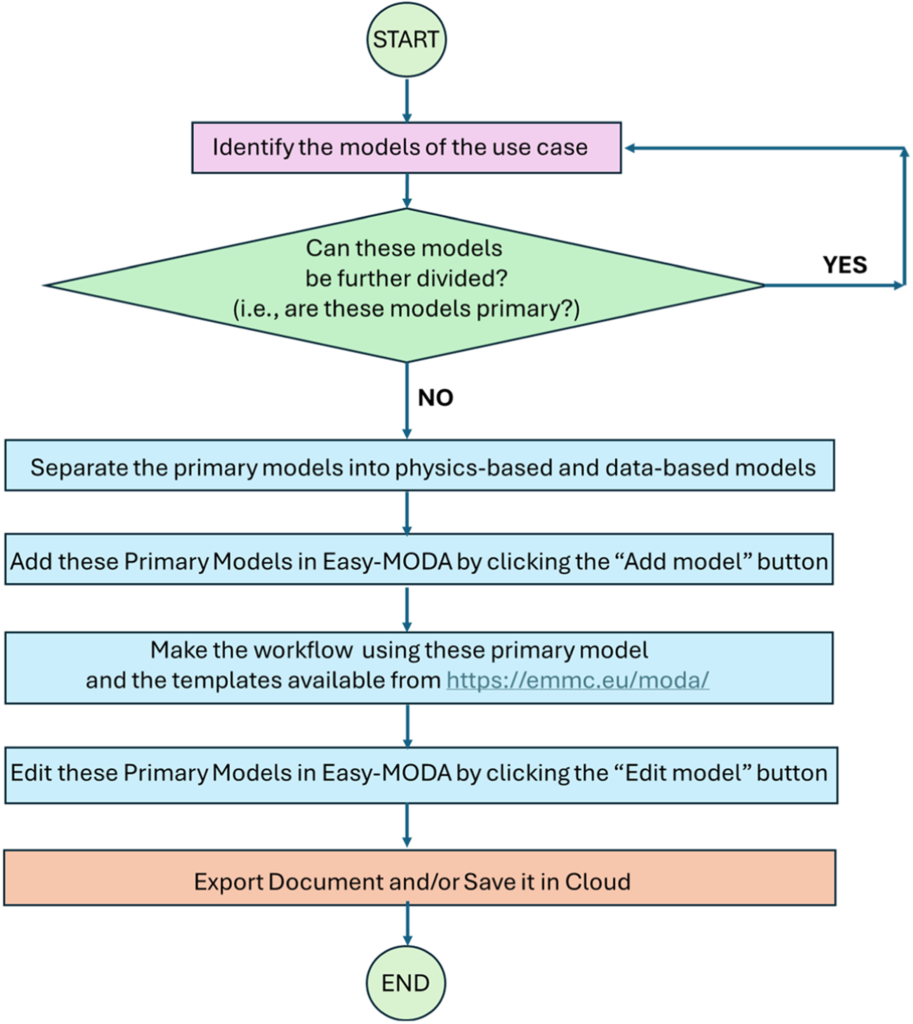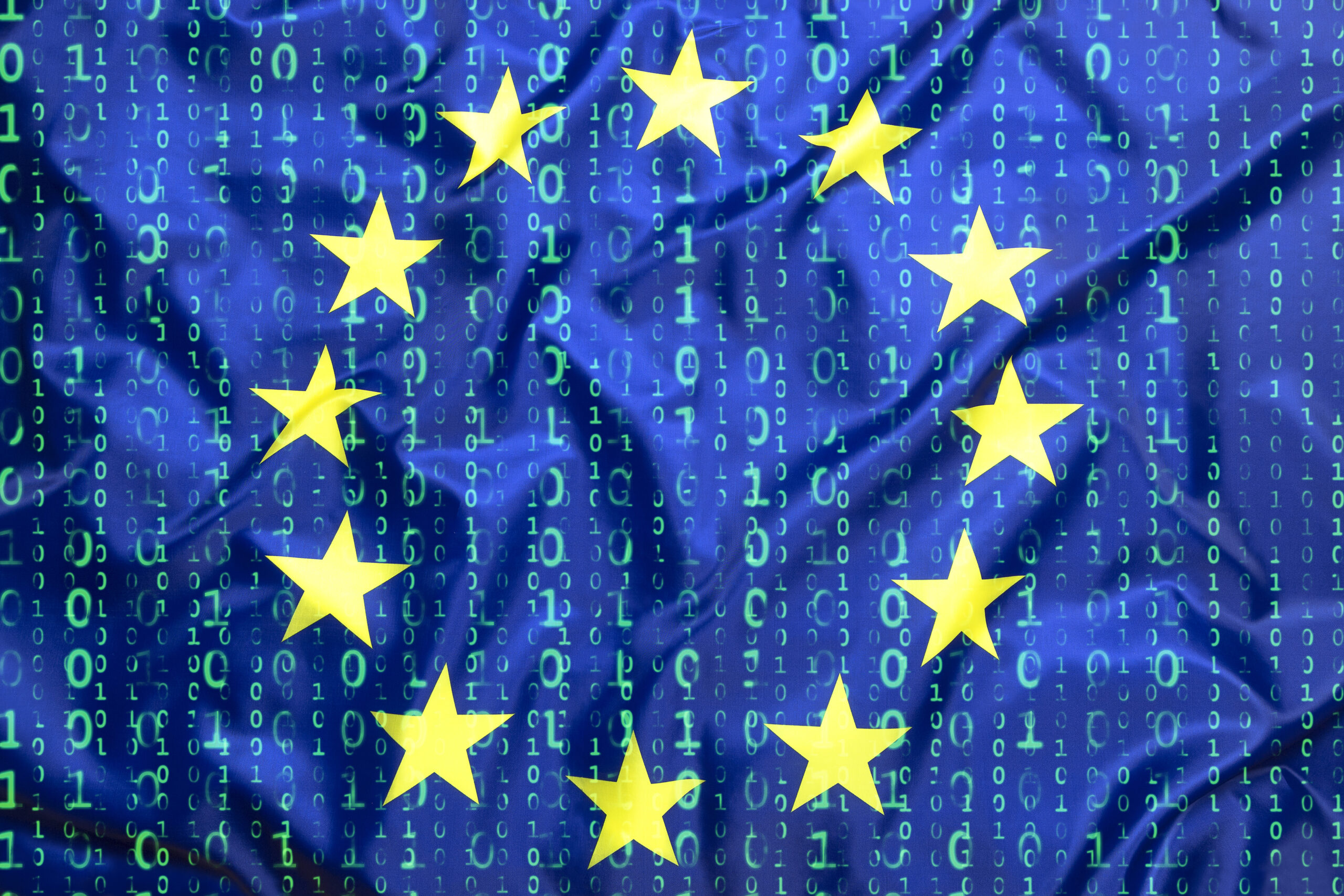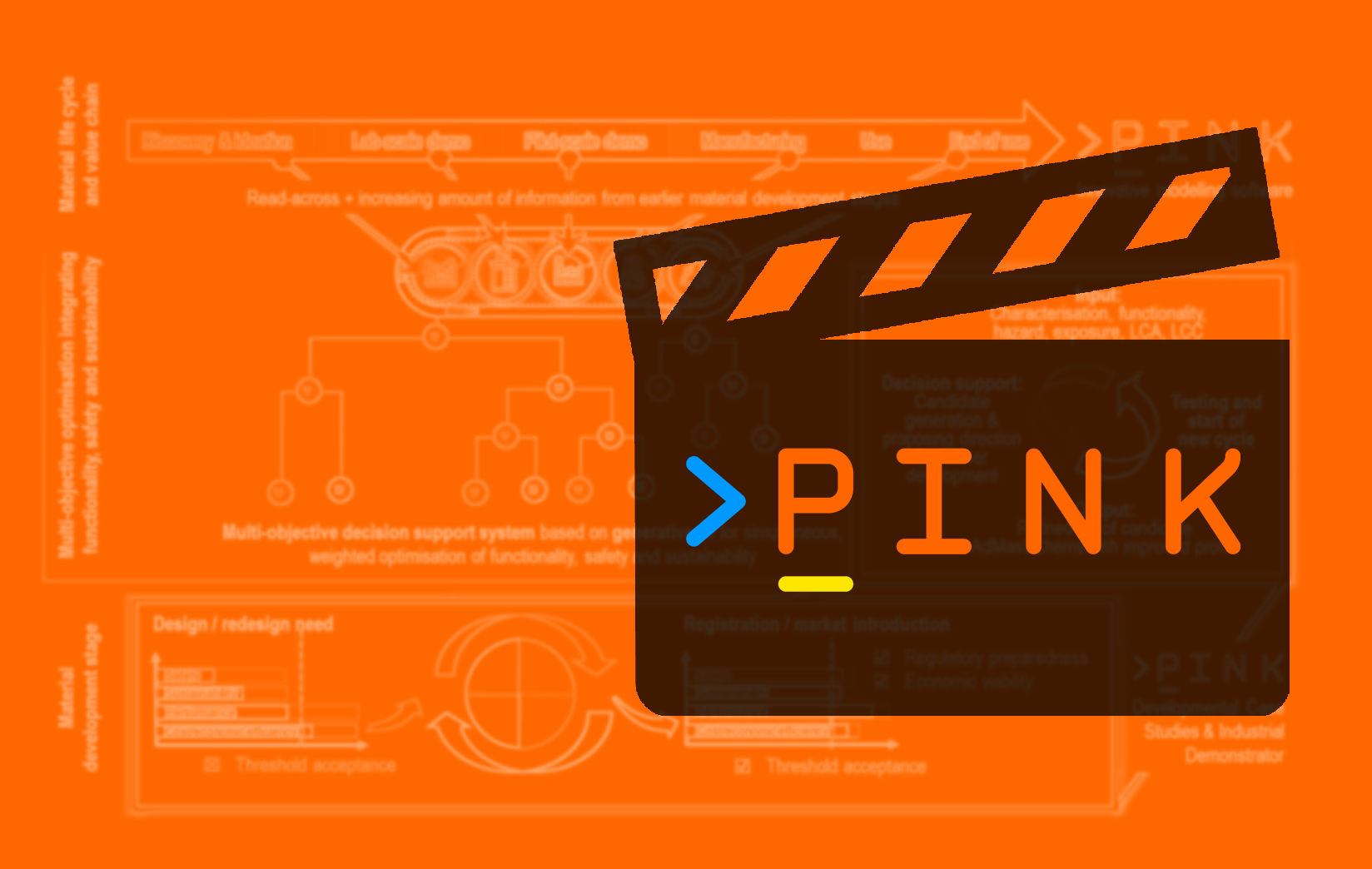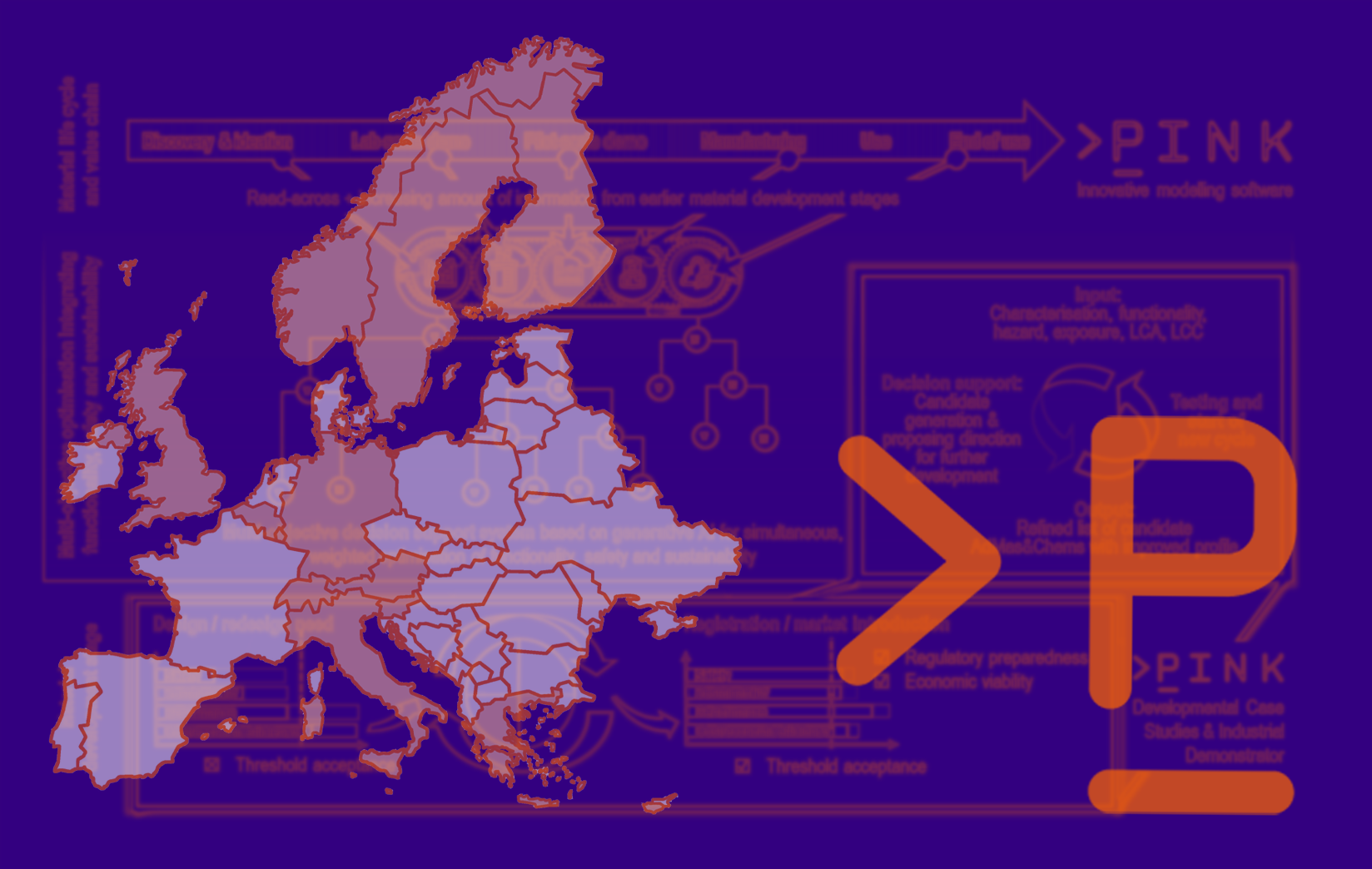Scientists from the PINK project partners NovaMechanics Ltd. (NovaM), National Technical University of Athens (NTUA), SINTEF Industry (SINTEF), University of Birmingham (UoB), and SevenPastNine GmbH (7P9-DE) have co-authored in the following publication about scientific simulation: “Easy-MODA: Simplifying standardised registration of scientific simulation workflows through MODA template guidelines powered by the Enalos Cloud Platform“
The EU-funded PINK project aims to produce innovative modelling software and integrated workflows for the development of advanced materials and chemicals. This aligns with the objectives of the Easy-MODA publication, which introduces a web-based tool designed to automate and simplify the creation of MODA (Modelling Data) templates for documenting simulation workflows. The INSIGHT and PINK projects, as main contributors to the publication, both focus on enhancing the standardisation and reproducibility of computational models, thereby improving their reliability and facilitating regulatory acceptance. The integration of physics-based and data-driven models, as facilitated by Easy-MODA, complements PINK’s goal of developing robust predictive frameworks for material and chemical development. Additionally, both projects emphasise the importance of user-friendly tools and structured metadata to support interdisciplinary collaboration and compliance with FAIR (Findable, Accessible, Interoperable, Reusable) principles.
The publication “Easy-MODA: Simplifying Standardised Registration of Scientific Simulation Workflows through MODA Template Guidelines Powered by the Enalos Cloud Platform” presents a solution to the longstanding challenge of ensuring the reproducibility and transparency of scientific simulation workflows. Computational models play an increasingly vital role in scientific research, yet the lack of standardised documentation and validation processes has hindered their widespread acceptance, particularly within regulatory frameworks.
The study highlights the existing challenges associated with the MODA template, a framework formalised in the CEN Workshop Agreement (CWA 17284:2018) to provide structured documentation of simulation models, including both physics-based and data-driven methodologies. Despite its advantages, the MODA framework has seen limited adoption due to the absence of automation tools that facilitate its use. To address this, the study introduces Easy-MODA, an innovative web-based platform designed to automate and simplify the generation of MODA-compliant documentation. By integrating pre-filled templates, automated guidance, and cloud-based storage, Easy-MODA significantly enhances accessibility and usability for researchers and regulatory professionals alike.
The primary objective of this research is to improve the reproducibility, interoperability, and transparency of computational models by ensuring that MODA documentation is both comprehensive and user-friendly. The study also explores how Easy-MODA aligns with the FAIR principles, thereby enhancing trust in simulation workflows and promoting broader acceptance of computational methods in scientific and regulatory contexts. A case study on nanotoxicity evaluation is presented to demonstrate the effectiveness of Easy-MODA in facilitating documentation of complex simulation processes.
The study demonstrates that Easy-MODA successfully streamlines the documentation of scientific simulation workflows by providing a structured and automated approach to completing MODA templates. The platform reduces the complexity of MODA documentation by providing automated prompts, checklists, and drop-down menus, ensuring accuracy and completeness. This reduces the likelihood of errors associated with manual data entry and enhances consistency across different modelling approaches. It facilitates seamless documentation of workflows that combine physics-based simulations with machine learning or other data-driven methodologies. This is particularly relevant for multiscale and interdisciplinary modelling approaches, which require careful documentation of data transformations and interdependencies between models.

A flow chart illustrating the steps required prior to and during the use of Easy-MODA (taken from the publication).
By systematically recording metadata in accordance with the MODA framework, Easy-MODA improves the traceability and reusability of models. This not only benefits individual researchers but also enhances collaboration across disciplines by providing clear, structured documentation that can be readily understood and applied by other experts. The system also features cloud-based storage and a search functionality that enables users to retrieve and update their documentation as needed. Each document is assigned a unique identifier, facilitating version control and long-term accessibility.
A practical demonstration of Easy-MODA is provided through a case study involving the toxicity assessment of silver (Ag), titanium dioxide (TiO₂), and copper oxide (CuO) nanoparticles (NPs). The workflow integrates physics-based atomistic simulations with machine learning models to predict NP toxicity. Easy-MODA successfully captures and structures the entire documentation process, illustrating its applicability in both research and regulatory contexts. The study underscores the significance of Easy-MODA in advancing the state of knowledge regarding simulation documentation. Unlike traditional MODA templates, which require extensive manual input and domain expertise, Easy-MODA provides an intuitive, automated approach that lowers the barrier to adoption and ensures compliance with established documentation standards.
While Easy-MODA represents a major advancement in simulation workflow documentation, several areas for improvement and future development are identified. One limitation is the need for automated workflow diagram generation. At present, users must manually create workflow images to illustrate the structure of their models. Future updates to Easy-MODA will include automated diagram generation to further streamline the documentation process. Another area for improvement is the expansion of its capabilities to support omics-based models. The current version of Easy-MODA is optimised for physics-based and data-driven models. However, emerging fields such as omics-based modelling, including proteomics, transcriptomics, and adverse outcome pathway analysis, require additional documentation capabilities. Future iterations of Easy-MODA will incorporate support for these complex modelling approaches.
Regulatory integration and standardisation remain crucial areas for development. Easy-MODA aligns with existing OECD guidelines for QSAR and PBK models. Further development is needed to enhance its applicability to additional regulatory frameworks, including those governing environmental risk assessment, materials modelling, and computational toxicology. Additionally, despite its intuitive design, widespread adoption of Easy-MODA will require targeted training and engagement with the scientific and regulatory communities. Collaborative efforts with research institutions and regulatory agencies will be essential to promoting its use and ensuring its integration into standard modelling practices.
Easy-MODA provides a transformative solution for standardising the documentation of scientific simulation workflows. By enhancing reproducibility, interoperability, and compliance with FAIR principles, it represents a significant step forward in advancing the reliability and transparency of computational models. The ongoing development of Easy-MODA, including the incorporation of automated workflow visualisation and expanded model compatibility, will further enhance its impact in the field of scientific research and regulatory science.
Parts of the research of this work (NovaM, NTUA, SINTEF, UoB, and 7P9) has been funded by the European Union`s R&I project PINK (grant agreement # 101137809).
Download the full paper here.







